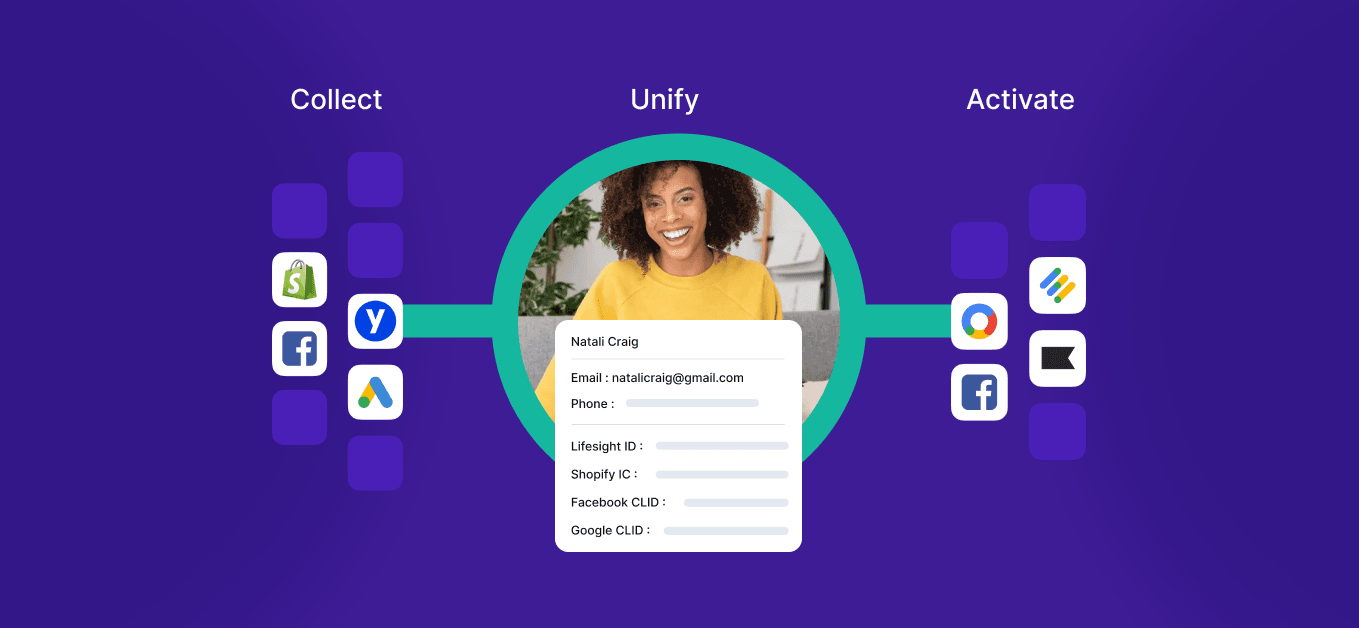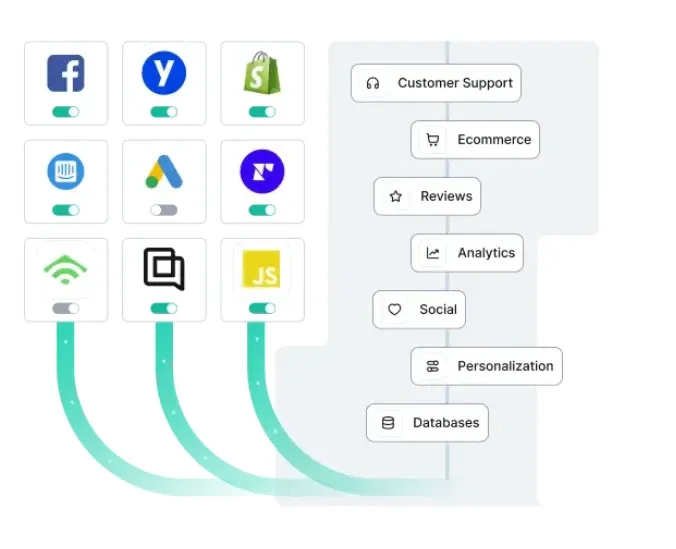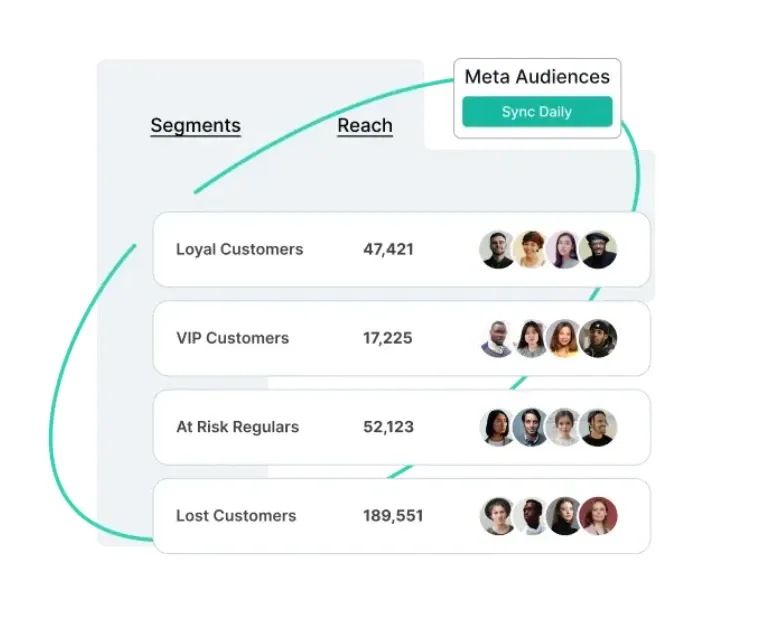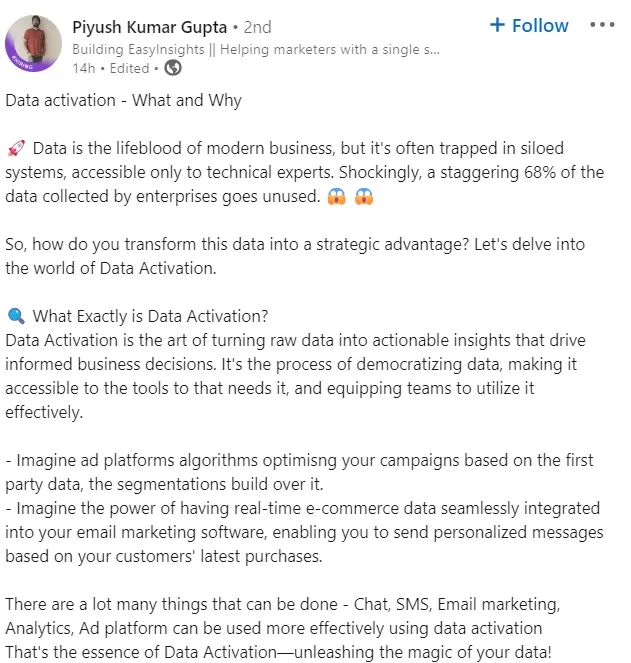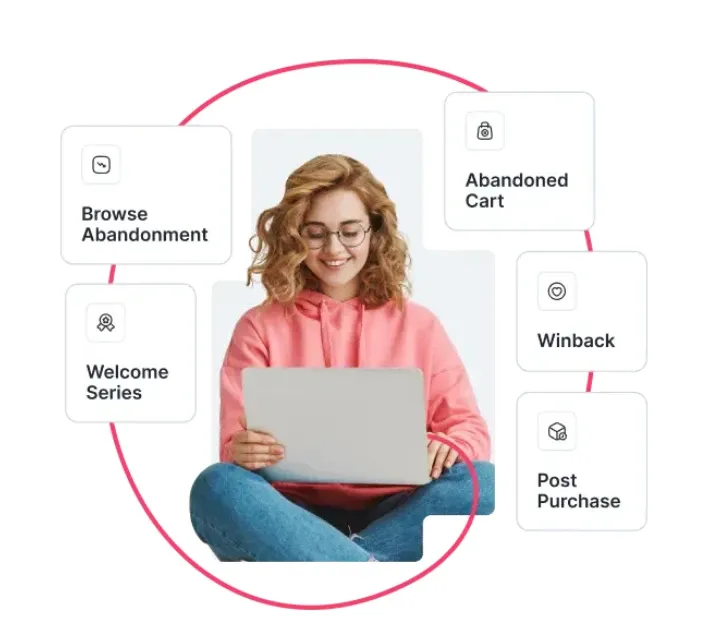Customer data is the core of any successful marketing strategy. It provides essential insights into customer behaviors and preferences, allowing marketers to personalize engagements and improve customer experiences.
Marketers today grapple with numerous complications from privacy constraints and disparate data sources. Data is often scattered across various platforms, making it challenging to derive meaningful insights. The heightened emphasis on user privacy also necessitates diligent data handling and compliance with stringent regulations.
As brands vie for the attention of increasingly discerning customers, traditional marketing tactics often need to be revised. The key to creating resonant, impactful interactions with your audience is leveraging customer data effectively.
In this post, we’ll explore the fundamentals of customer data management and how to optimize it across three key phases: Collect, Unify, and Activate.
This methodology turns fractured data into unified customer intelligence. Collect establishes an expansive, trustworthy data foundation. Unify identities into complete customer profiles. Activate makes data operational across platforms and teams.
Whether you’re a small business owner just dipping your toes into data analytics or a seasoned marketing executive at a large corporation, understanding how to collect, unify, and activate customer data is fundamental for building a robust engagement strategy.
How To Collect Customer Data?
The first step is ingesting customer data from all sources and touchpoints. This includes zero, first, second, and third-party data via APIs, batch uploads, etc. The goal is to amass a rich dataset encompassing all customer interactions.
There are numerous approaches to data collection, but the most common method is to utilize existing marketing resources. It involves recognizing various touchpoints across the customer journey, from website visits and social media interactions to purchase history and customer service interactions. Every customer interaction with your brand is a potential source of valuable data.
Collect Customer Data
Say, for example, you are interested in learning more about how visitors interact with your website. Analytical tools allow you to monitor site activity and provide insights into what users most frequently require assistance with.
This step is crucial as it lays the groundwork for all subsequent actions, enabling a deeper understanding of customer behaviors, preferences, and needs.
How To Unify Customer Data?
Unify your data: The subsequent step after collecting data is to consolidate it into a single location. Marketers should aim to avoid the inconvenience of navigating between multiple platforms to access comprehensive data. In order to accomplish that objective, it is recommended to utilize a customer data platform.
With a CDP like Lifesight’s Connect, you can put together reports and charts that show patterns in your data about your customers and marketing. It allows you to retarget anonymous users via first-party identity graphs while managing privacy compliance.
Unify Customer Data
However, if you lack the necessary expertise, obtaining and setting up these tools can be a time-consuming, difficult, and expensive process so it’s often best to work with an expert.
How To Activate Customer Data?
Activating customer data means leveraging the unified, coherent customer data to drive marketing strategies, enhance customer engagement, and ultimately boost business outcomes. It is the stage where insights derived from unified data are operationalized to create more resonant and effective marketing initiatives.
How does activating data help you?
- Audience Targeting: The process of activating data enables the identification of the target audience. Your customer data can tell you a lot about the types of people who buy from you and what they desire. This allows you to further refine your marketing efforts by segmenting your audience into smaller, more precise subgroups. Additionally, you can reach a more relevant audience and get more conversions if you market to people who have traits similar to the ones you find in your data.
Audience Targeting
-
- Boost marketing efficiency: Data activation is also helpful in determining which marketing strategies get the best results. After all, it takes more than just knowing your audience to succeed. You need to reach them with a strategic marketing campaign as well. Data activation in marketing allows you to assess the efficacy of various strategies and identify areas for improvement. After that, you may double down on what’s helping and abandon or improve what isn’t.
- Budget reallocation: Last but not least, data activation can greatly improve the efficiency of your business’s operations. From a marketing and sales perspective, it is possible to identify areas where financial resources are being expended on endeavors that do not contribute to organizational objectives.
Once a unified view of the customer is obtained, data activation involves creating and executing personalized marketing campaigns to engage customers effectively. A well-orchestrated, personalized campaign can result in improved customer retention and superior customer experiences, ensuring that the right message reaches the right customer at the right time.
Piyush Kumar Gupta, a founding member of EasyInsights, an analytics platform, offered his insights on data activation.
Piyush Kumar Gupta on Data Activation
Engagement platforms empower brands to operationalize insights from unified customer data. It allows for the orchestration of tailored 1:1 messaging, which enhances customer retention and provides an enriched customer experience.
Engagement platforms
Moreover, activating customer data should be manageable. Therefore, most of the available engagement solutions are designed to allow marketers to enact many growth use cases without extensive technical resources, enabling efficient resource management and ensuring that brands can scale their campaigns without unnecessary expenditure.
Postscript: Achieve data-driven engagement
It’s been established that customer data is a mandatory engagement strategy. But deriving value requires rigorously collecting, unifying, and activating it across your stack.
With the right strategies and technologies, fractured data transforms into unified customer intelligence – the foundation for personalized experiences. Modern solutions like Lifesight Connect simplify managing the data complexity. Connect provides end-to-end capabilities to collect, unify, and activate data with machine learning.
Now, you can deliver tailored omnichannel experiences powered by a complete view of each customer. You move from assumptions to intelligence-driven engagement. See Connect in action with a demo tailored to your goals.
The future is bright when you truly know your audience. Let us give you a personalized demo tailored to your stack and strategic engagement objectives. Discover how a next-gen customer data platform can help you achieve data-driven engagement success.
You may also like
Essential resources for your success
